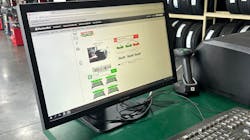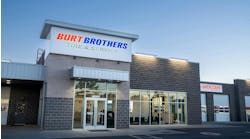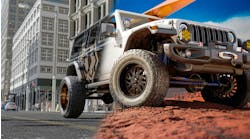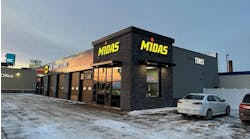Most tire dealership owners like to point to discounting by service advisors as the biggest cause of poor gross margins. But what if I told you that discounting wasn’t your biggest gross profit problem?
Let’s do a small financial exercise. Grab your last P&L or any random month’s P&L you have nearby. Look for the line “discounts.” If you don’t track discounts, you have to start doing that first. Add back the discounts to your gross profit amount. Now, divide the new gross profit amount by total sales. You’ll very likely find that your margins are still below what they should be. If you sell both tires and auto service, your target for total gross profit is 60%. If you sell just service, that target is at least 75%.
What’s keeping you from hitting those targets? There are two main reasons for this underperformance.
The first and most likely reason is poor ticket building. In other words, parts are not being calculated properly to achieve good parts margins. The target for good parts margins is 50%. If you do a lot of heavy repairs, this can be a challenge as you can’t simply get 50% on a radiator or transmission. You need to sell more simple maintenance, where the margins on parts are much higher. You also need to make sure you are collecting the right amount for labor.
With the issue of comebacks, it is strongly recommended that if you repair a mistake for free, the ticket should be billed out normally and a separate expense line should be used to reduce the ticket to zero dollars. This does two things: it maintains the tracking of parts margins and creates a separate line to track the cost of comebacks.
Remember, tracking parts margins is about making sure the system is working properly, so if you see a decline in parts margins, you can accurately find the problem and not just blame a comeback or a few big jobs.
Building a good estimate is a skill in and of itself. It requires not just the input from the technician on what’s wrong, but an understanding of all that is involved in the job. And make sure you add fluids to a ticket when servicing that component. Gaskets and brackets are also overlooked frequently.
I would suggest to any manager or owner that you should take a random day’s tickets and review them with a fine-tooth comb to see where opportunities are missed. That could be in missing parts, missing labor or underpriced parts.
Additionally, are you buying at the right price? Many times, a shop will slide into complacency in ordering parts from a vendor and not bother to check if that vendor’s price is competitive. If a vendor is being chosen because they are faster at delivering, then factoring in a proper matrix for gross profit is the price you pay for faster service.
The second reason for lower gross margins is your mix of business. If your business is 70% tire sales, you will struggle to meet your total gross profit margins. A shop that makes a fair profit takes care of the customer by letting them know the condition of their vehicle. Not informing a customer of maintenance that is due or systems that need attention is a disservice to that customer.
Traditionally, a shop that is functioning well will have a balance of $1 in parts, $1 in labor and $1 in tire sales. Recent inflation and wage growth may bump up your labor collection slightly and that’s OK. This balanced ratio shows that a shop is taking care of walk-in business — what the customer came in for — and also allows the customer to make decisions about upcoming maintenance and unknown issues, like a low battery, a cracked belt or a burned-out bulb.
Consistency is absolutely key to running a modern tire dealership. Every dealership should have a rock-solid process on how a vehicle is entered into the system, inspected and estimated and also how customers are informed.
Customers look for consistency as it eases their fears of vehicle repair. That vehicle is the second most expensive thing they will ever buy and they don’t generally understand how it works. If one time they are told about the condition of their brakes when they take their car in for a tire rotation and the next time they are not told, this will create a lack of trust.
Proper margins are one of the keys to a successful tire dealership. With proper margins, your business can invest in itself, you can pay your employees a fair wage and you can prepare for large expenses in the future.




